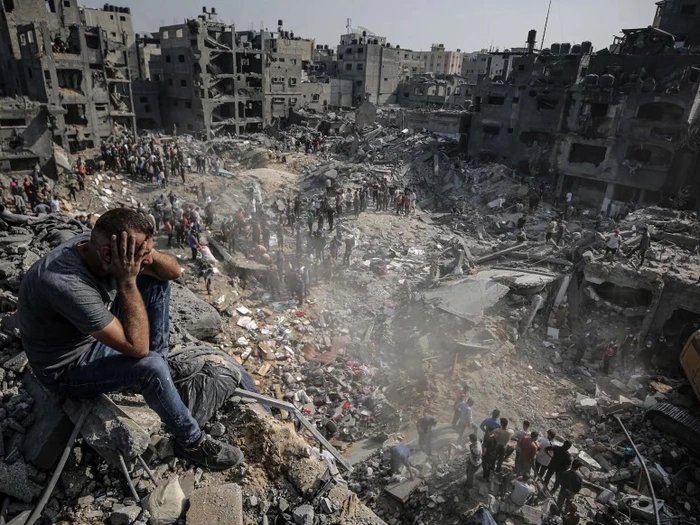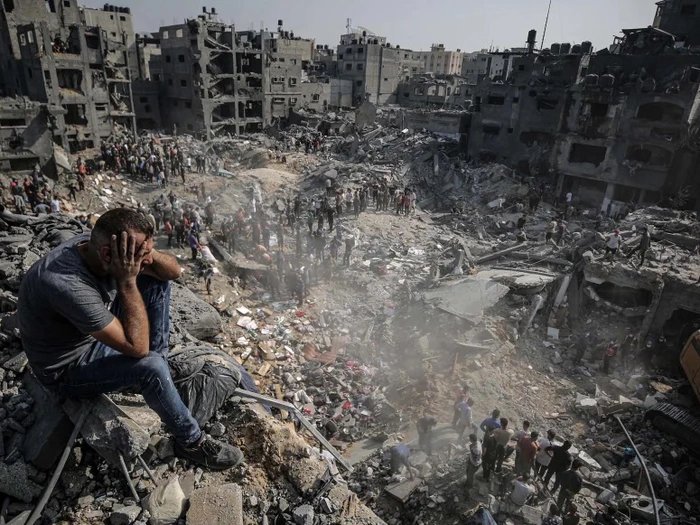In recent years, the Israel-Gaza conflict has once again become a focal point of international attention due to the frequent escalations of violence. Israel’s military strategies in these conflicts are often complex, multifaceted, and heavily scrutinized. One of the most significant tactics Israel has employed in its military engagements with Gaza is the use of powerful bombing campaigns. These operations are not only a response to rocket fire or militant attacks but are also a key part of Israel’s broader strategic objectives in the region. This article explores Israel’s approach to these bombing campaigns, the motivations behind them, the military tactics used, and the broader implications for the region and international relations.
To understand Israel’s strategy in launching bombing campaigns against Gaza, it is crucial to first comprehend the historical context that underpins the Israel-Gaza conflict. The roots of the conflict trace back to the mid-20th century, with the creation of the State of Israel in 1948 and the subsequent displacement of Palestinian populations. Over the decades, Israel has been engaged in a series of military operations aimed at securing its borders and combating Palestinian militant groups, primarily Hamas, which controls the Gaza Strip.

The Gaza Strip, home to more than two million Palestinians, has been under Israeli blockade since 2007, following Hamas’s rise to power. The blockade, which restricts the movement of goods and people, has resulted in significant humanitarian challenges for Gaza’s residents. However, it has also contributed to the intensification of hostilities, leading to periodic flare-ups of violence, including airstrikes, rocket attacks, and ground operations.
Israel’s military strategy is rooted in its national defense doctrine, which is centered around the concept of “deterrence.” This doctrine aims to prevent attacks on Israeli civilians by maintaining a credible and overwhelming military response to any aggression. The Israeli Defense Forces (IDF) prioritize precision strikes, technological superiority, and rapid mobility in their military operations. Bombing campaigns are often employed as part of this strategy to incapacitate enemy forces, destroy infrastructure, and dismantle militant groups’ capabilities.
The primary objectives behind Israel’s bombing campaigns in Gaza are twofold: to weaken Hamas’s military infrastructure and to reduce the threat of rocket fire into Israeli territory. Hamas, classified as a terrorist organization by Israel and many other countries, has consistently launched rockets at civilian targets in Israel, leading to Israeli military retaliations. These campaigns aim to diminish Hamas’s ability to launch such attacks and disrupt its command-and-control operations.
Israel’s bombing campaigns are characterized by the use of advanced technology, precision airstrikes, and intelligence-driven operations. The IDF has access to cutting-edge weapons systems, including fighter jets, drones, and missile defense systems, all of which are strategically employed during bombing operations. One of the most notable technologies used by Israel is the “Iron Dome” missile defense system, which is designed to intercept and destroy short-range rockets fired at Israel.

However, bombing campaigns are not solely focused on defense. Israel has also deployed airstrikes on specific targets in Gaza, including Hamas’s military infrastructure, weapons caches, rocket-launching sites, and tunnels used for smuggling weapons and fighters. These operations are designed to disarm Hamas and diminish its ability to wage war. While these airstrikes are intended to be precise, the dense urban environment of Gaza makes it challenging to avoid collateral damage, leading to civilian casualties.
One of the key components of Israel’s bombing strategy is intelligence gathering. The IDF relies heavily on intelligence from a variety of sources, including satellite surveillance, human intelligence (HUMINT), and signals intelligence (SIGINT). These intelligence sources allow Israel to pinpoint specific militant targets and minimize the risk of hitting non-military sites.
The use of intelligence is particularly important in the context of Gaza, where Hamas often operates within civilian areas, including homes, schools, and hospitals. Israel’s military doctrine seeks to minimize harm to civilians, but the complexity of the environment and Hamas’s use of human shields complicate this goal. The IDF has implemented measures to try to warn civilians of impending strikes, such as “roof knocking” (the use of a smaller, less powerful missile to alert residents before a larger strike), but such efforts have not always been successful in preventing casualties.
Despite Israel’s efforts to target military assets, civilian casualties have remained a significant concern during bombing campaigns. The densely populated nature of Gaza means that even well-targeted airstrikes can result in significant loss of life among non-combatants. According to various human rights organizations, Israel’s bombing campaigns have led to the deaths of thousands of Palestinian civilians, including women and children.

These civilian casualties have drawn widespread international criticism. Some argue that Israel’s bombing campaigns constitute disproportionate use of force and may amount to violations of international law, including the Geneva Conventions, which prohibit targeting civilians. Israel, however, maintains that its actions are justified as self-defense against terrorism and that it takes steps to minimize harm to civilians. The debate over the legality and morality of Israel’s military operations is a central issue in the broader discourse surrounding the Israel-Palestine conflict.
Another significant consequence of Israel’s bombing campaigns is the widespread destruction of Gaza’s infrastructure. Airstrikes have destroyed homes, schools, hospitals, and essential services, exacerbating the humanitarian crisis in the region. Gaza’s already fragile economy has been further strained by the destruction of commercial and industrial facilities, leaving many without work and basic necessities.
The destruction of infrastructure has long-term consequences for Gaza’s civilian population. Rebuilding efforts are complicated by the blockade, which restricts the flow of materials and resources needed for reconstruction. Additionally, the psychological trauma caused by constant airstrikes and the loss of family members, homes, and livelihoods is a significant burden on Gaza’s residents.
Israel’s bombing campaigns are not only a military operation but also a political and diplomatic maneuver. These campaigns are often timed to coincide with specific political goals, such as deterring Hamas from launching further rocket attacks or pressuring Palestinian leadership to engage in ceasefire negotiations. Israel’s leadership seeks to demonstrate resolve and maintain public support by showcasing the military’s ability to protect Israeli citizens.

On the international stage, Israel’s bombing campaigns are met with varying degrees of support and condemnation. Some countries, including the United States, defend Israel’s right to self-defense, while others criticize the disproportionate use of force and call for an end to the airstrikes. The United Nations and various human rights organizations have called for investigations into alleged war crimes committed during the campaigns.
As the conflict continues, questions about the long-term effectiveness of Israel’s bombing campaigns remain. While these campaigns may temporarily degrade Hamas’s military capabilities, they have not led to a lasting peace. The root causes of the conflict—territorial disputes, political power struggles, and the status of Jerusalem—remain unresolved.
The continued cycle of violence raises concerns about the future of Gaza and the prospects for a two-state solution. Many analysts argue that military operations alone will not bring about a lasting resolution to the conflict. Instead, they call for a renewed focus on diplomacy, negotiations, and addressing the underlying grievances of both Israelis and Palestinians.
Israel’s strategy in launching bombing campaigns against Gaza is shaped by a combination of military objectives, technological capabilities, intelligence operations, and political considerations. While these campaigns are intended to defend Israel from rocket fire and degrade Hamas’s military infrastructure, they have also resulted in significant civilian casualties and widespread destruction. The international community remains divided on the morality and legality of Israel’s actions, and the prospects for peace in the region remain uncertain. The ongoing conflict underscores the complexity of the Israel-Gaza situation and the challenges of achieving a lasting resolution.
